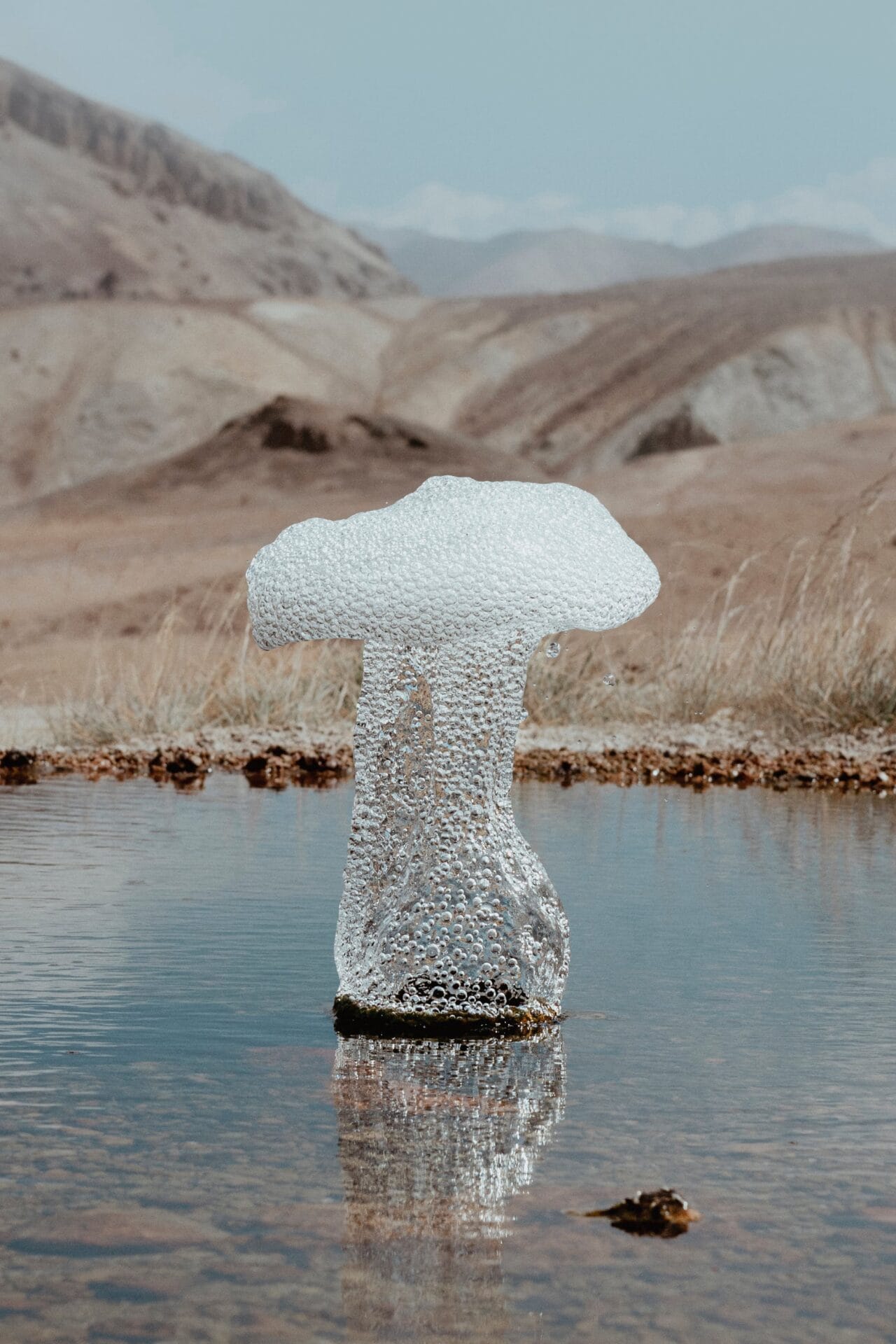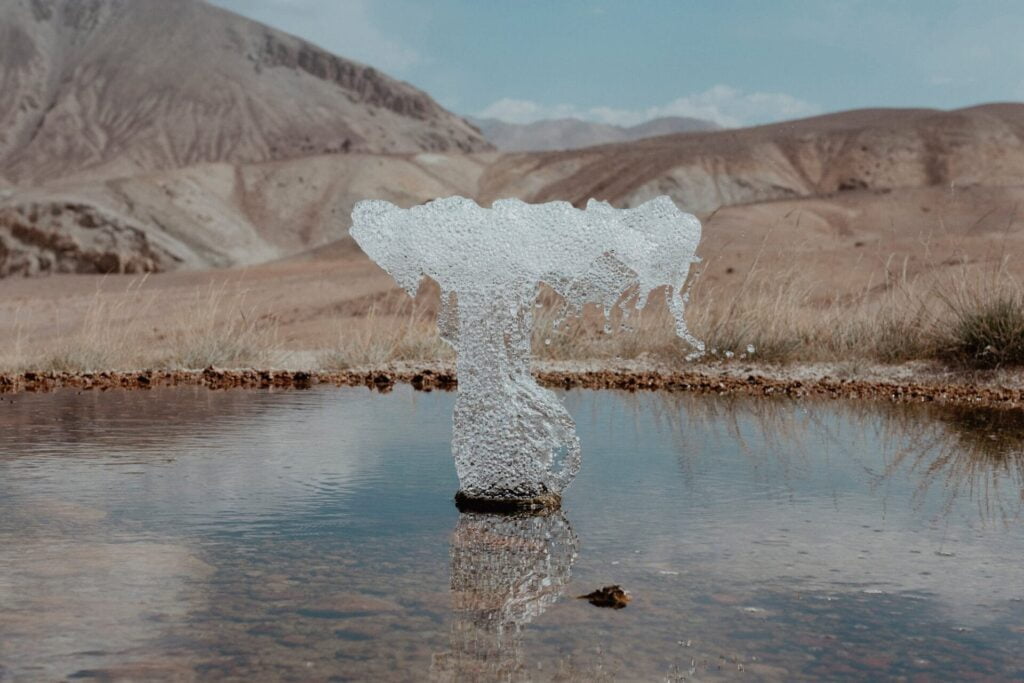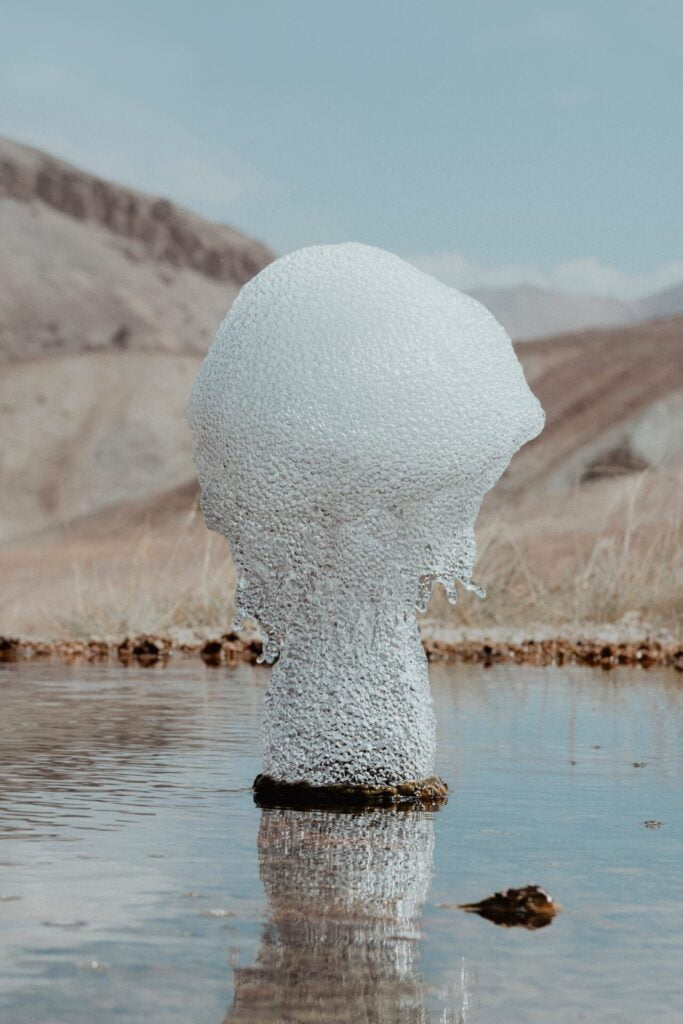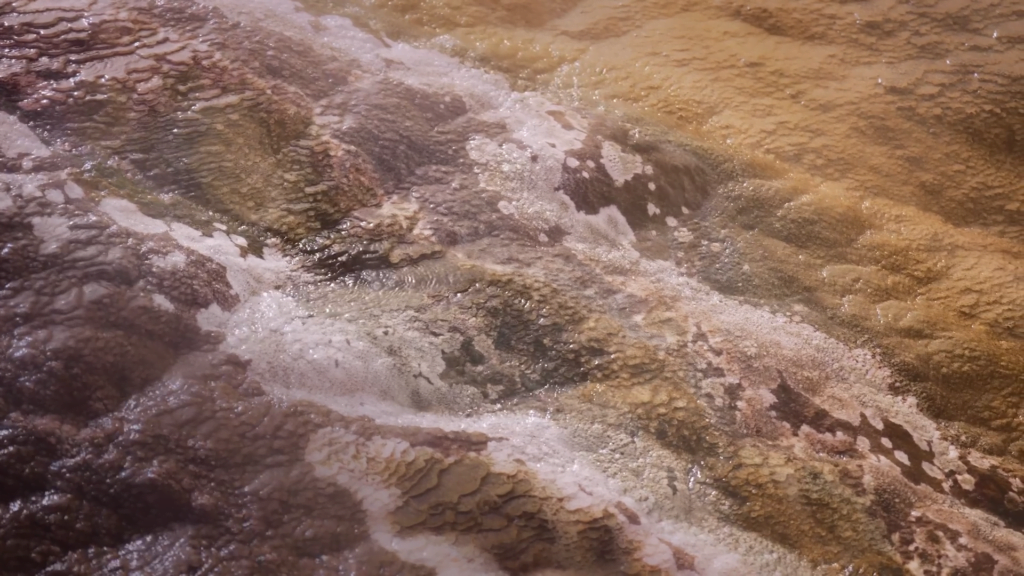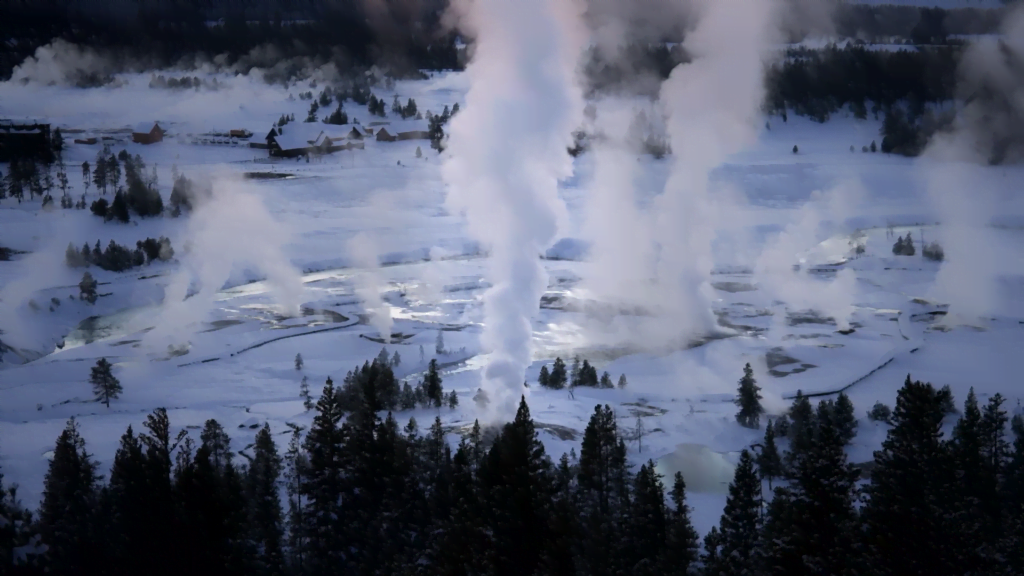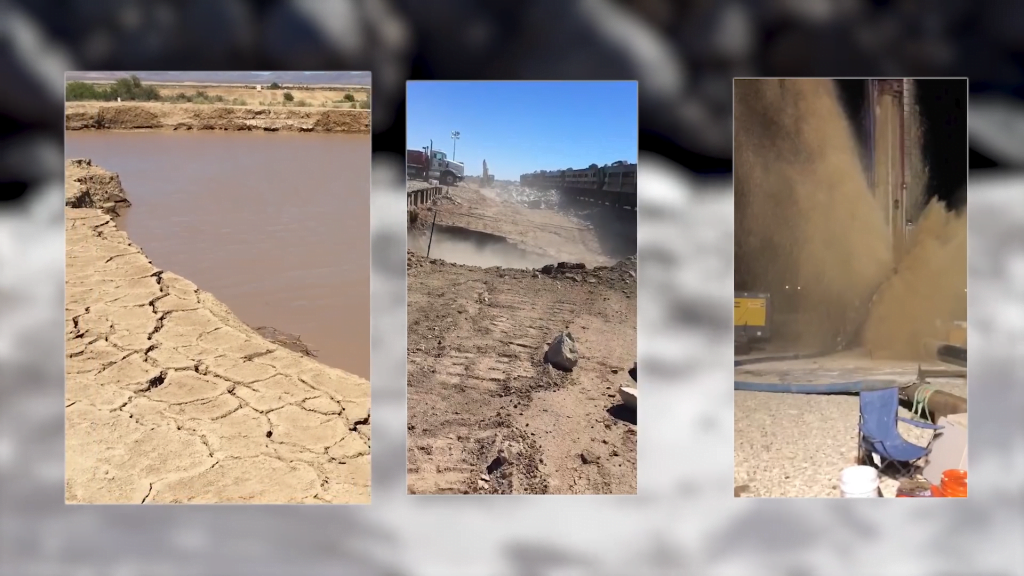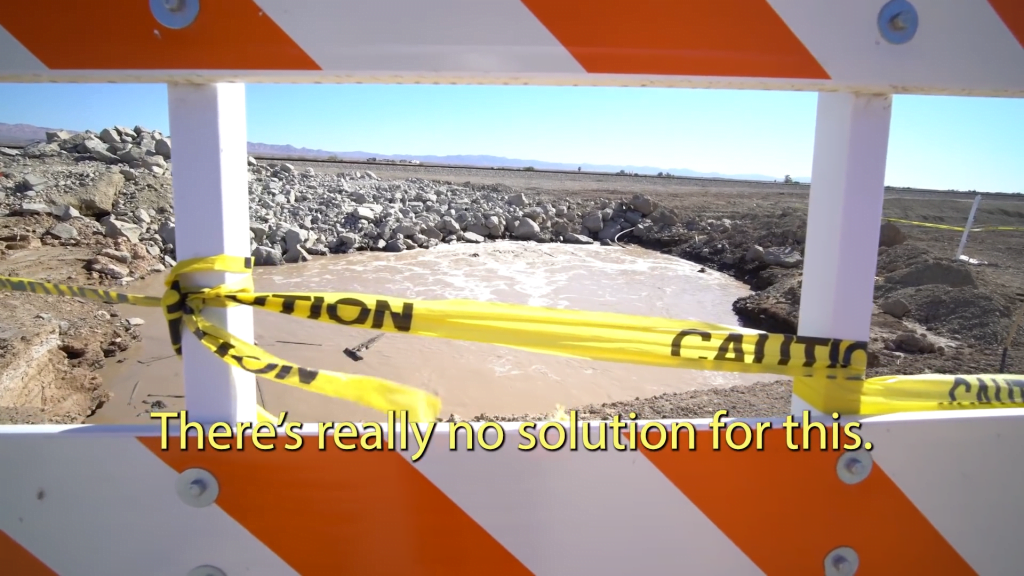Known as “The Land of Fire and Ice,” Iceland has some of the most striking landscapes around. Photographer Jennifer Esseiva captures auroras, waterfalls, geysers, rivers, and more in this series from her 2024 trip to the island. Every one of these images bears the fingerprints of fluid dynamics: plasma flows lighting up the night sky; rivers of lava that formed the land; rivers and oceans that carve through the landscape; and pressurized, superheated water that shoots up from underground plumbing. (Image credit: J. Esseiva; via Colossal)
Tag: geyser

Geyser Sculptures
In the remote landscape of Tajikistan, photographer Øystein Sture Aspelund discovered a small geyser near a high-altitude lake. With a fast shutter, he “froze” the shapes of the eruption, capturing bubbly columns, mushrooms, and splashes. I love the sense of texture here. Aspelund’s photographs really highlight the difference between a geyser and an artificial fountain: bubbles. Geysers erupt because of the buildup of steam and pressure in their underground plumbing. Those bubbles are the signature of that process. (Image credit: Ø. Aspelund; via Colossal)

“-37F Winter in Yellowstone”
Yellowstone National Park is always fascinating and surreal, but especially so in winter when volcanically-heated geysers and springs meet frigid, snowy weather. This short film from Drew Simms shows the park and its wildlife in the depths of winter. The bison rely on thick, shaggy fur coats to trap heat and keep dry. Steam and mist mingle around springs and giant plumes rise from geysers. What a strange and beautiful landscape! (Video and image credit: D. Simms)

Mapping Yellowstone Underground
Yellowstone National Park is filled with geysers, hot springs, and mudpots — all geophysical features driven by the underground movement of water heated by the underlying volcano. But what does that underground plumbing look like? To find out, a team of researchers flew a 25-m diameter electromagnetic loop over portions of the park; they used the electromagnetic feedback induced in the loop to roughly map the subsurface features of the park.
To their surprise, they found that deep hydrothermal vents in Yellowstone lie in discrete locations; previously, geologists assumed the vents were more widespread. With a better sense of what lies beneath, park officials will be able to build new infrastructure in areas better protected from one of the park’s biggest hazards: hydrothermal explosions caused by a buildup of pressure underground. (Image credits: top – I. Shturma, map – C. Finn et al.; research credit: C. Finn et al.; via Physics World)
Editor’s Note: This article was written and scheduled prior to the historic flooding in Yellowstone in June 2022.

Geophysical map of Yellowstone’s Upper Geyser Basin, including Old Faithful. 
The Mobile Mud Spring of Niland, CA
What’s part geyser, part mud pot, and all creeping, unstoppable natural disaster? The Niland Geyser, known as the world’s only moving mud spring. Dianna explores this geological mystery in the video above. Although the mud spring has been known for years, it was only in 2016 that it started moving toward railroad tracks and a state highway. So far engineering efforts to stop it have failed, so engineers are instead working to mitigate its effects on infrastructure.
That’s a tall order when dealing with a pit of unknown depth that’s constantly bubbling with deadly carbon dioxide. The spring managed to move past a 75-foot-deep wall and, on another occasion, sent heavy drilling mud flying skyward from its built-up pressure. Check out the full video to learn more. (Image and video credit: Physics Girl)

Slow Mo Geyser
Geysers are one of the most surreal wonders of our planet – pools of turquoise that periodically erupt into towers of water and steam. But what we see from the surface is only a small part of the story. Geysers require two main ingredients: an intense geothermal heat source and the right plumbing. Below ground, that plumping needs both a reservoir for water to gather and narrow constrictions that encourage the build-up of pressure.
A cycle begins with water filling the reservoir; this can be both geothermally heated water and groundwater seeping in. As the geyser fills, the pressure at the bottom increases. Eventually, the water becomes superheated, meaning that it’s hotter than its boiling point at standard atmospheric pressure. That’s when the steam bubbles you see above rise to the surface. When they break through, it causes a sudden drop in the reservoir pressure. The superheated water there flashes into steam, causing the geyser to erupt. Check out the full video below for some awesome high-speed video of those eruptions, and, if you’re curious what the inside of an active geyser looks like check out Eric King’s video. (Image and video credit: The Slow Mo Guys; submitted by @eclecticca)

Geyser Physics
Three basic components are necessary for a geyser: water, an intense geothermal heat source, and an appropriate plumbing system. In order to achieve an explosive eruption, the plumbing of a geyser includes both a reservoir in which water can gather as well as some constrictions that encourage the build-up of pressure. A cycle begins with geothermally heated water and groundwater filling the reservoir. As the water level increases, the pressure at the bottom of the reservoir increases. This allows the water to become superheated–hotter than its boiling point at standard pressure. Eventually, the water will boil even at high pressure. When this happens, steam bubbles rise to the surface and burst through the vent, spilling some of the water and thereby reducing the pressure on the water underneath. With the sudden drop in pressure, the superheated water will flash into steam, erupting into a violent boil and ejecting a huge jet of steam and water. For more on the process, check out this animation by Brian Davis, or to see what a geyser looks like on the inside, check out Eric King’s video. (Video credit: Valmurec; idea via Eric K.)








